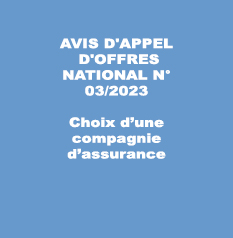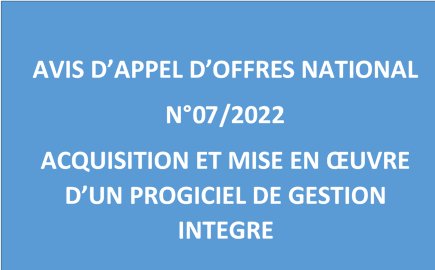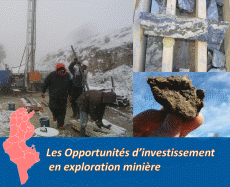| Programme annuel & rapport de suivi technique |
-

Rapport d'activités 2023
-

Programmes Techniques 2024
|
| Géocatalogue |

|
| Appels d'Offres |
-

ACQUISITION DES TICKETS RESTAURANT POUR LE PERSONNEL DE L’ONM
-

CHOIX D’UNE COMPAGNIE D’ASSURANCE
-

ACQUISITION ET MISE EN ŒUVRE D’UN PROGICIEL DE GESTION INTEGRE
|
|
Investir en Tunisie |


|
|
|
|
|
::
Documentation and Editions
>>
Research library
|
| |
|
[
Search by author
]
[
Search keyword
]
[
Search by index
]
[
Search by category
]
|
title of the reference :
|
Differenciation of environments of dolomite formation, lower cretaceous of central Tunisia.
|
|
Publication Date:
|
1981
|
|
Author :
|
M'rabet Ali
|
|
Catalogue type :
|
Livre
|
|
Catalogue reference :
|
(NLD) Sedimentology Differenciation of environments of dolomite formation, lower cretaceous of central Tunisia. Différenciation des environnements de la formation de dolomite, Crétacé inférieur de la Tunisie Centrale. Combined field, sedimentological, mineralogical, isotopic and geochemical study of the Lower Cretaceous dolomites of Central Tunisia has demonstrated considerable variety in origin. Environments of dolomite formation include deep phreatic, karst, lacustrine and evaporitic sabkha. All four groups of dolomite are composed of non-stoichiometric and/or disordered crystals which are more or less rich in calcium and in iron. Petrographic fabrics are of three types : replacement, recrystallisation and cementation. These three fabrics are proposed among the various criteria for the different environments of dolomitization. Average isotope (18?O and 13?C)contents for these four dolomite groups range from -10.5 to 0.4 p.m. (PDB)and -3.9 to +3.7 p.m. respectively. The distribution of strontium is related both to the degree of recrystallization and to the paleosalinity. Ferrous iron, also very common, is regarded as an indicator of relatively deep reducing conditions, mainly in meteoric groundwaters. Sodium distribution is related to inclusions within the dolomite, its distribution being relatively constant in all groups: it cannot be regarded as a reliable criterion for paleosalinity of dolomitizing fuids. This study confirms that dolomitization may occur under widely different paleoenvironments, either at the surface or during burial. With the exception of the sabkha environment, dolomitizing fluids seem to have been essentially meteoric. bibliogr. dolomie ; Crétacé inférieur ; sable ; quartz ; évaporite ; paléokarst ; sebkha ; isotope ; O18 O16 ; C13 C12 ; strontium ; diagenèse ; milieu lacustre ; Tunisie ; Tunisie Centrale M'rabet Ali Roches Sédmentaires, Sédimentologie
|
|
Indexation decimale :
|
Roches Sédmentaires, Sédimentologie
|
|
Keywords :
|
dolomie ; Crétacé inférieur ; sable ; quartz ; évaporite ; paléokarst ; sebkha ; isotope ; O18 O16 ; C13 C12 ; strontium ; diagenèse ; milieu lacustre ; Tunisie ; Tunisie Centrale
|
|
Summary :
|
Combined field, sedimentological, mineralogical, isotopic and geochemical study of the Lower Cretaceous dolomites of Central Tunisia has demonstrated considerable variety in origin. Environments of dolomite formation include deep phreatic, karst, lacustrine and evaporitic sabkha. All four groups of dolomite are composed of non-stoichiometric and/or disordered crystals which are more or less rich in calcium and in iron. Petrographic fabrics are of three types : replacement, recrystallisation and cementation. These three fabrics are proposed among the various criteria for the different environments of dolomitization. Average isotope (18?O and 13?C)contents for these four dolomite groups range from -10.5 to 0.4 p.m. (PDB)and -3.9 to +3.7 p.m. respectively. The distribution of strontium is related both to the degree of recrystallization and to the paleosalinity. Ferrous iron, also very common, is regarded as an indicator of relatively deep reducing conditions, mainly in meteoric groundwaters. Sodium distribution is related to inclusions within the dolomite, its distribution being relatively constant in all groups: it cannot be regarded as a reliable criterion for paleosalinity of dolomitizing fuids. This study confirms that dolomitization may occur under widely different paleoenvironments, either at the surface or during burial. With the exception of the sabkha environment, dolomitizing fluids seem to have been essentially meteoric.
|
|
Exemplaries :
|
TU839B, TU839A
|
|
|
|
|
|
|
|



